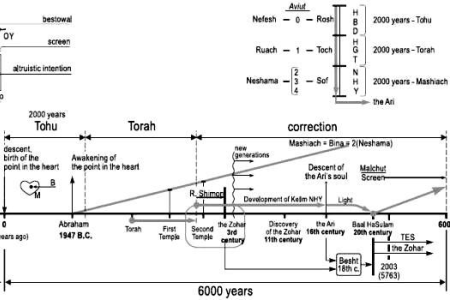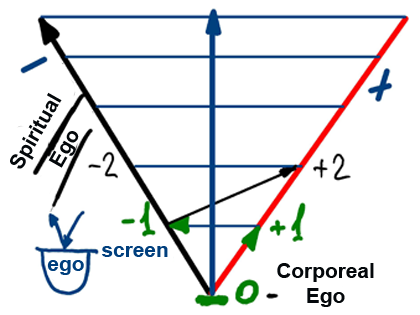Man is enslaved in all his motions, shackled in iron chains by the views and manners of others, who are society — Kabbalist Yehuda Ashlag, “The Freedom”
Continue reading “What Baal HaSulam Writes About Man and Society”
Welcome to the official Kabbalah Blog of the Bnei Baruch Kabbalah Education & Research Institute. Here you will find all the latest Kabbalah articles, videos, audio, news, features, Kabbalah books and Bnei Baruch website updates and content additions.
Man is enslaved in all his motions, shackled in iron chains by the views and manners of others, who are society — Kabbalist Yehuda Ashlag, “The Freedom”
Continue reading “What Baal HaSulam Writes About Man and Society”
What is the attribute of mercy? Our sages defined it as: “what’s mine is yours and what’s your is yours.” And if all the people in the world were to behave that way, it would cancel all the glory of the attribute of truth and judgment, because if each and everyone would be naturally willing to give everything he has to his fellow man and take nothing of another for himself, then the whole interest in lying to one another would disappear, and there would be no room to speak of the attribute of truth whatsoever, because true and false are relative – and if there were no falsehood in the world, there would be no concept of truth. Needless to say that the other attributes that are there only to strengthen the attribute of truth because of its weakness, would also be cancelled.
Truth is defined in the words: “what’s mine is mine, and what’s yours is yours.” That contradicts the attribute of mercy and cannot altogether tolerate it because in truth, it is unjust to labor and strain for another, because besides causing his friend to fail, he accustoms him to exploit his fellow man. Thus, truth dictates that every person treasure his own assets for a time of need so he will not have to be a burden on his fellow man.
Baal HaSulam (Kabbalist Yehuda Ashlag), in “Peace in the World.”

In each generation, the same souls that existed in previous generations reappear. They are clothed in new bodies, evolve, and become more sensitive and receptive to sublime and complex spiritual knowledge. Thus, people who lived thousands of years ago had the same souls as our own but are more developed today, bringing technological and spiritual progress to our world.
Any progress in humankind is the result of souls rising to a higher degree, after having gained experience in previous lives. Each soul that comes to our world begins its life with the experiences it has accumulated in the previous life. Hence, the soul goes through a process of accumulating knowledge, spiritual attainments, and worldly sensations, leaving it with memories we call Reshimot (records or reminiscences).
Of all the souls that have come down to our world from previous generations, only a few have wished to evolve into the spiritual realms. However, in our time, many have done so. We are much more advanced than our ancestors. It is easier for us to absorb new information and live it, because we are born prepared to absorb this information. Hence, each new piece of data is completely natural for us.
Kabbalah books tend to be revealed and concealed intermittently. They can be hidden for several generations, reappear, and then be lost again. It happens this way so that humanity can go through certain “corrections” (Tikkunim). Generally speaking, these books exist throughout the history of humankind to correct humanity and assure its development. All these books will be known to everyone in the future. The Zohar and the books of the prophets state that in our final days, all humanity will use these books as manuals for attaining the upper worlds, and people will have happy, eternal, and complete lives.
Souls of great Kabbalists go through special cycles. They do not appear in our world in every generation but, like the books, only in special ones. The soul of the first man incarnated later on in Abraham the Patriarch, Moses, Rabbi Shimon Bar- Yochai, the Holy Ari, and, in our days, Rabbi Yehuda Ashlag.
Such a soul comes only during special times, when it is meant to influence and correct the entire human race.
In the 16th century, the time of the Middle Ages and barbarism, a child was born in Jerusalem. Later in his life he received the name the Holy Ari. He absorbed the entire Kabbalistic knowledge since the first man and processed it and phrased it in such a way that all the generations following him could receive their spiritual nourishment from his books.

The gist of our work is the making of the Kli. If we know how to build our tool of perception correctly, we will understand where we truly are. Our substance consists of a desire to receive delight and pleasure.
If we can make this substance sensitive to insights concerning reception and bestowal, we will be able to use it to perceive the spiritual world. It is similar to the way a block of crude iron is melted to create engine parts. When assembled correctly, they yield a working engine.
Similarly, we must work with ourselves to perceive spirituality. Building the spiritual Kli is a lot like sculpting—you must carve the raw material and file it until the desired shape appears. The raw material, in this case, consists of our desires, our thoughts, and intentions.
The Creator formed Creation with the intention of doing good to His creatures. To realize His goal, He created a Kli—a will to receive—that would receive His benefit. At first, this will is shapeless. Shaping the will to receive is the work of us all until it is robed in its final form—bestowal, the form of the Creator.
The substance itself remains as it was first made—a will to receive pleasure—but changing the intention to bestowal likens its modus operandi to that of the Creator. Thus, the intention is the form.
Kabbalah books depict the forms that one should create in the will to receive, degree-by-degree, to finally sense the benefits that come from the Creator. The general will to receive consists of 613 desires, and each of these is topped either by an aim to receive, or an aim to give. These forms of reception or bestowal that “cover” each desire determine one’s degree of spiritual attainment.
A degree is a certain level of strength of the Form of bestowal. This enables the benefits of the Creator to manifest within the will to receive. The diverse fillings within the will to receive are the origin of the many names of the Creator. It is the perceiving individual who names the Creator according to the flavors he or she feels within the Creator’s bestowal.
Once the Kabbalists attained the nature of reality and studied it, they divided the manner of recognition of reality into four levels: Matter, Form in Matter, Abstract Form, and Essence. Kabbalah is a practical study method that leads researchers thoroughly and systematically along the evolutionary trail. As in any other scientific method, Kabbalah teaches the researcher what to do, which results are to be expected, and expounds on the reasons for them. Kabbalah does not engage in depicting theoretical states that one cannot carry out independently and with full awareness.
Continue reading “Little Known Ways that Develop a Person’s Sixth Sense”
We cannot attain any reality as it is in itself. Rather, we attain everything according to our sensations. And reality, as it is in itself, is of no interest to us at all. Hence, we do not attain the Torah as it is in itself, but only attain our sensations. Thus, all of our impressions follow only our sensations.
Baal HaSulam, Shamati [I Heard], Article no. 66, “The Giving of the Torah”
Baal HaSulam, “The Wisdom of Kabbalah and Philosophy”Therefore, we must not inquire how the sages of the Kabbalah, which fill the entire wisdom with their insights, differentiate between the various Lights. That is because these observations do not refer to the Lights themselves, but to the impression of the vessel, being the above-mentioned force, which is affected by its encounter with the Light.
In addition, the form itself will change in a person according to his ups and downs, as we have said above that the Light is Simple Light and all the changes are only in the receivers.“There is no change in the Light.” Rather, all the changes are in the Kelim, meaning in our senses. We measure everything according to our imagination. From this it follows that if many people examine one spiritual thing, each will attain according to his imagination and senses, thereby seeing a different form.
Baal HaSulam, Shamati [I Heard], Article no. 3, “The Matter of Spiritual Attainment”
Continue reading “10 Kabbalah Quotes about Self Transformation”